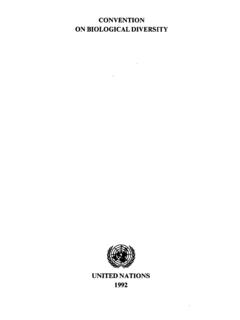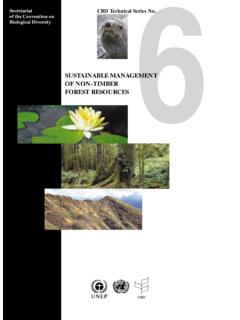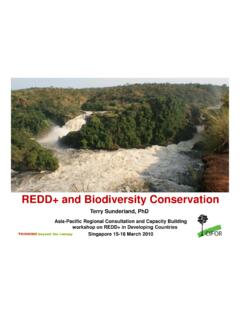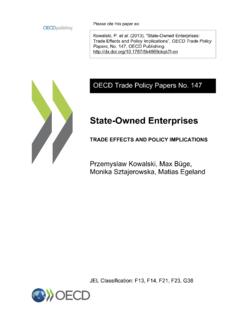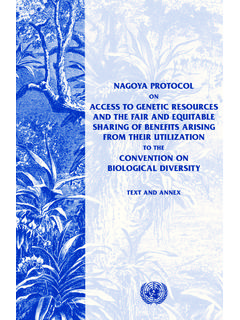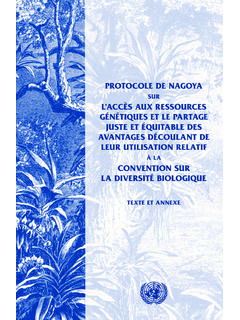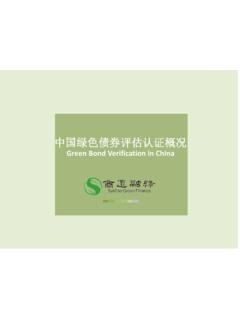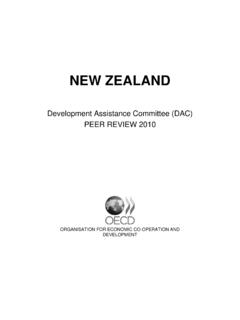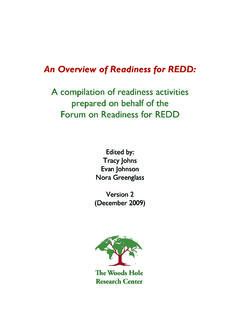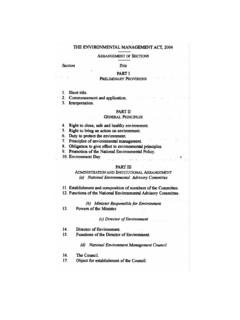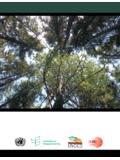Transcription of Introduction to access and benefit-sharing
1 Convention on biological diversity : ABS Introduction to access and benefit-sharingWhat are genetic resources?All living organisms; plants, animals and microbes, carry genetic material that could be potentially useful to humans. These resources can be taken from the wild, domesticated or cultivated. They are sourced from environments in which they occur naturally (in situ), or from human-made collections such as botanical gardens, genebanks, seed banks and microbial culture collections (ex situ). Why are genetic resources important?There are significant potential benefits to be gained by accessing genetic resources and making use of them.
2 They provide a crucial source of information to better understand the natural world and can be used to develop a wide range of products and services for human benefit. This includes products such as medicines and cosmetics, as well as agricultural and environmental practices and , like many key resources in the world, genetic resources are not evenly distributed. What s more, the plants, animals and microbes in which they are found often make up complex and delicately-balanced ecosystems which can be threatened or endangered. The way in which genetic resources are accessed, and how the benefits of their use are shared, can create incentives for their conservation and sustainable use, and can contribute to the creation of a fairer and more equitable economy to support sustainable current understanding of genetic resources owes a great deal to the traditional knowledge of indigenous and local communities.
3 This valuable knowledge has been built up and handed down over generations. It is essential that the value of traditional knowledge is understood and valued appropriately by those who use it, and that the rights of indigenous and local communities (ILCs) are considered during negotiations over access and use of genetic resources. Failing to do this can put the knowledge, the resources and the communities at risk. access and benefit-sharingWhat is access and benefit-sharing ? access and benefit-sharing (ABS) refers to the way in which genetic resources may be accessed, and how the benefits that result from their use are shared between the people or countries using the resources (users) and the people or countries that provide them (providers).
4 Why is it important?Providers of genetic resources are governments or civil society bodies, which can include private land owners and communities within a country, who are entitled to provide access to genetic resources and share the benefits resulting from their use. The access and benefit-sharing provisions of the Convention on biological diversity (CBD) are designed to ensure that the physical access to genetic resources is facilitated and that the benefits obtained from their use are shared equitably with the providers. In some cases this also includes valuable traditional knowledge associated with genetic resources that comes from ILCs.
5 The benefits to be shared can be monetary, such as sharing royalties when the resources are used to create a commercial product, or non-monetary, such as the development of research skills and knowledge. It is vital that both users and providers understand and respect institutional frameworks such as those outlined by the CBD and in the Bonn Guidelines. These help governments to establish their own national frameworks which ensure that access and benefit-sharing happens in a fair and equitable way. How does it work? access and benefit-sharing is based on prior informed consent (PIC) being granted by a provider to a user and negotiations between both parties to develop mutually agreed terms (MAT) to ensure the fair and equitable sharing of genetic resources and associated benefits.
6 Prior informed consent (PIC): is the permission given by the competent national authority of a provider country to a user prior to accessing genetic resources, in line with an appropriate national legal and institutional framework. Mutually agreed terms (MAT): is an agreement reached between the providers of genetic resources and users on the conditions of access and use of the resources, and the benefits to be shared between both conditions are required under Article 15 of the CBD, which was adopted in 1992 and provides a global set of principles for access to genetic resources, as well as the fair and equitable distribution of the benefits that result from their is involved?
7 Providers of genetic resources: States have sovereign rights over natural resources under their jurisdiction. They are obligated to put in place conditions that facilitate access to these resources for environmentally sound uses. Providers agree terms, which include PIC and MAT, for granting access and sharing benefits equitably. Laws within the provider country may entitle others, such as indigenous and local communities (ILCs), to also negotiate terms of access and benefit-sharing . The participation of ILCs is necessary in instances where traditional knowledge associated with genetic resources is being accessed.
8 Users of genetic resources: Users are responsible for sharing the benefits derived from genetic resources with the providers. They seek access to genetic resources for a wide range of purposes, from basic research to the development of new products. They are a diverse group, including botanical gardens, industry researchers such as pharmaceutical, agriculture and cosmetic industries, collectors and research institutes. national Focal points : To facilitate access , users need a clear and transparent process that details who to contact and what the requirements and processes are in provider countries in order to gain access .
9 national Focal points are responsible for providing this information. Competent national Authorities (CNAs): CNAs are bodies established by governments and are responsible for granting access to users of their genetic resources, and representing providers on a local or national level. national implementation measures establish how CNAs work in a given are five key themes that underpin access and benefit-sharing of genetic resources. These are covered in a series of factsheets, which tackle each theme themesTimeline1992 The text of the CBD is opened for signature at the Rio Earth Summit1993 The CBD is ratified and comes into force 29th December 1998 A panel of experts is established to clarify principles and concepts related to access and benefit-sharing2000 The Conference of the Parties establishes the Ad Hoc Open-ended Working Group on access and benefit-sharing (ABS)
10 With the mandate to develop guidelines to assist with the implementation of the ABS provisions of the CBD2002 The Conference of the Parties adopts the Bonn Guidelines on access to Genetic Resources and Fair and Equitable Sharing of the Benefits Arising out of their Utilization At the World Summit on Sustainable Development, governments call for action to negotiate an international regime to promote the fair and equitable sharing of benefits arising from the use of genetic resources 2004 The Working Group on ABS is given the mandate to negotiate an international regime on access and benefit-sharing , in accordance with decision VII/19 D of the Conference of the The Conference of the Parties establishes a clear process for the finalization of the international regime on access and benefit-sharing and its adoption at its tenth meeting in October 2010.
